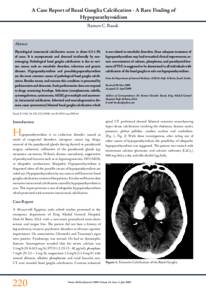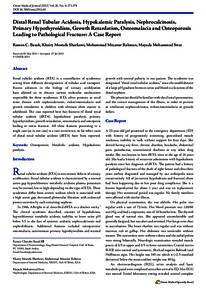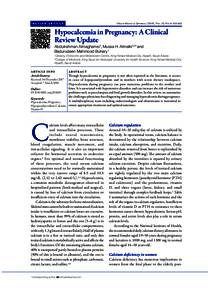وثيقة
A case report of basal ganglia calcification : a rare finding of hypoparathyroidism.
الناشر
Oman Medical Specialty Board.
ميلادي
2009-07
اللغة
الأنجليزية
الملخص الإنجليزي
Physiological intracranial calcification occurs in about 0.3-1.5%
of cases. It is asymptomatic and detected incidentally by neuroimaging. Pathological basal ganglia calcification is due to various causes, such as: metabolic disorders, infectious and genetic
diseases. Hypoparathyroidism and pseudohypoparathyroidism
are the most common causes of pathological basal ganglia calcification. Besides tetany and seizures this condition is presented by
parkinsonism and dementia. Such parkinsonism does not respond
to drugs containing levodopa. Infections (toxoplasmosis, rubella,
cytomegalovirus, cysticercosis, AIDS) give multiple and asymmetric intracranial calcification. Inherited and neurodegenerative diseases cause symmetrical, bilateral basal ganglia calcification which
is not related to metabolic disorders. Since adequate treatment of
hypoparathyroidism may lead to marked clinical improvement, serum concentration of calcium, phosphorus, and parathyroid hormone (PTH) is suggested to be determined in all individuals with
calcification of the basal ganglia to rule out hypoparathyroidism.
المجموعة
URL المصدر
zcustom_txt_2
Basak, Ramen C. (2009). A case report of basal ganglia calcification : a rare finding of hypoparathyroidism. Oman Medical Journal, 24 (3), 220-222.
قالب العنصر
مقالات الدوريات



